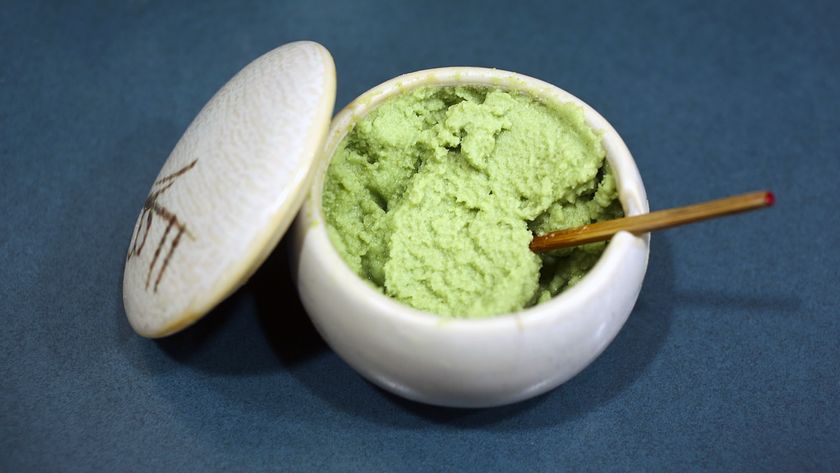The Quest for a Painless Way to Check Blood Sugar
Eight-year-old Christiana Kirchner is a snacker, who likes nothing more than eating five or six mini meals throughout the day. But these days, she sometimes forgoes her favorite treats so she can avoid the necessary blood tests that precede them.
Christiana was diagnosed with Type 1 juvenile diabetes last March, and now the Palatine, Ill., third-grader has to prick her finger to test her blood sugar before she eats. The pricks provide vital information about her blood glucose levels, but are painful and leave her tiny fingers calloused and throbbing.
"There are times where she's like, 'Forget it, I don't want to eat,'" said her mother, Sue Kirchner. She and her husband sometimes prick their own fingers to just show their daughter that they feel her pain.
Sue said she wishes there was a way to measure her daughter's blood glucose levels without having to collect blood. Currently, there are no noninvasive blood glucose monitors approved by the Food and Drug Administration.
But if there was one, many people would stand to benefit: Nearly 26 million people in the United States — 8.6 percent of the population — have diabetes, according to a recent report from the Centers for Disease Control and Prevention, and that number continues to rise.
The area is ripe for innovation, as nationwide spending on managing the disease balloons past $174 billion. A number of companies and universities have thrown their hat into the ring to attempt to devise an affordable, noninvasive way to effectively measure blood glucose levels.
If they succeed, such a device would revolutionize the way people manage their diabetes, and would be a financial boon for its developers, said Mark A. Arnold, an expert in noninvasive technology and chair of the Department of Chemistry at the University of Iowa.
Sign up for the Live Science daily newsletter now
Get the world’s most fascinating discoveries delivered straight to your inbox.
But companies have tried for the last 20 years to develop a noninvasive device accurate enough to rival a traditional blood glucose monitor, Arnold said. So far, no product has held up in clinical trials, and because of that, the research landscape is filled with caution, he said.
"It's one of those high-risk, high-payoff endeavors," Arnold told MyHealthNewsDaily.
Lack of funds
Most insurance plans cover the cost of glucose monitors, and test strips for monitors are inexpensive — about 75 cents per strip — but a noninvasive test, if manufactured cheaply enough, could save money by rendering strips unnecessary, Arnold said. And a device that conducts measurements over regular intervals could give patients a better idea of the direction their glucose levels are headed.
But a bad economy and wary investors have put some companies' research efforts on hold. Visual Pathways, a medical diagnostic company based in Prescott, Ariz., paused development on its device due to financial reasons.
And Randall Jean, an associate professor of electrical and computer engineering at Baylor University, also had his work slowed by lack of funding. The device he's developing uses electromagnetic waves that go through skin tissue and identify glucose molecules.
"We've talked to lots of people who are interested, but it's sort of like you have to solve the problem before anyone's willing to help you solve the problem," Jean told MyHealthNewsDaily.
Science behind the technology
In general, there are two types of noninvasive technology. The first measures blood glucose indirectly; for example, by measuring the way light scatters when it hits skin tissue, Arnold said. This could work because our skin's chemistry can vary with blood glucose levels.
The second type of technology is more direct, measuring the glucose molecules themselves without penetrating the skin. For example, a device might use spectroscopy, which bounces different wavelengths of light off the body, and measures the wavelengths of light that glucose absorbs, Arnold said.
But so far, each device has met with pitfalls. Some weren't specific enough to distinguish between glucose and the fats, amino acids and proteins in the skin. Others showed false correlations between actual blood glucose levels and what was displaying on the monitor, he said.
"Companies have fooled themselves in the past thinking they're measuring glucose when they're measuring these false correlations," Arnold said.
The great race
Despite past defeats, some are still stepping up to the plate to invent the first FDA-approved noninvasive glucose monitoring device.
At the Massachusetts Institute of Technology, researchers have spent the last 15 years developing a device that uses near-infrared light and spectroscopy technology.
Their latest version takes into account a common pitfall of noninvasive devices: the differing glucose levels between blood and the interstitial fluid that surrounds cells.
Many past noninvasive devices detected glucose levels in the interstitial fluid, but not in the blood. But glucose levels might be different in the blood and the interstitial fluid, depending on when the measurement is taken, said researcher Ishan Barman, a graduate student at MIT.
"This is the challenge we have taken up," Barman told MyHealthNewsDaily.
Barman, along with associate lab director Ramachandra Rao Dasari and colleagues, have devised a mathematical model that takes into account the 10- to 15-minute lag time needed for glucose levels to equalize between blood and the interstitial fluid. They applied that model to the latest version of their device, and will test it on 20 to 30 volunteers over the next three months.
If all goes well, a $5,000 to $6,000 device for clinical use would be developed by the end of 2012. Smaller, more inexpensive versions could be available in the next four or five years, Barman said.
Researchers at Princeton University are also investigating a noninvasive solution. Claire Gmachl, an electrical engineering professor there, recently began work on a device that uses mid-infrared lasers to detect glucose levels. But the technology is still in early stages and is being tested on human cells and animal tissue, she said.
It's not just universities doing research. Israeli company Integrity Applications developed a device called the GlucoTrack, which works by being being calibrated with a traditional glucose monitor. GlucoTrack sensors attach to the earlobe like a clip. The product is entering clinical trials, and if it works, the company said it plans to submit it to Europe's equivalent of the FDA for approval in 2012.
And in the United States, Echo Therapeutics of Franklin, Mass., plans to test its Symphony needle-less blood glucose monitor on about 30 diabetes patients next spring. The Symphony monitor works via a biosensor that measures glucose as it comes out of the capillaries beneath the skin.
Much is at stake. Dr. Betul Hatipoglu, a staff endocrinologist at the Cleveland Clinic, said her patients frequently ask her if there's a prick-less way to measure their blood glucose levels.
Her answer is always the same: "Someday."
If there was noninvasive glucose monitoring, diabetes patients would never have to worry about pained fingers. They could check their glucose levels anytime without dread, she said.
"When you type, when you drive, when you hold your bags, when you open a bag of chips, [the pain] is always there," Hatipoglu told MyHealthNewsDaily.
"It's always reminding you."
Pass it on: As the number of people with diabetes in the United States increases, the stakes are rising to develop a prick-free way to measure blood glucose levels.
Follow MyHealthNewsDaily staff writer Amanda Chan on Twitter @AmandaLChan.













